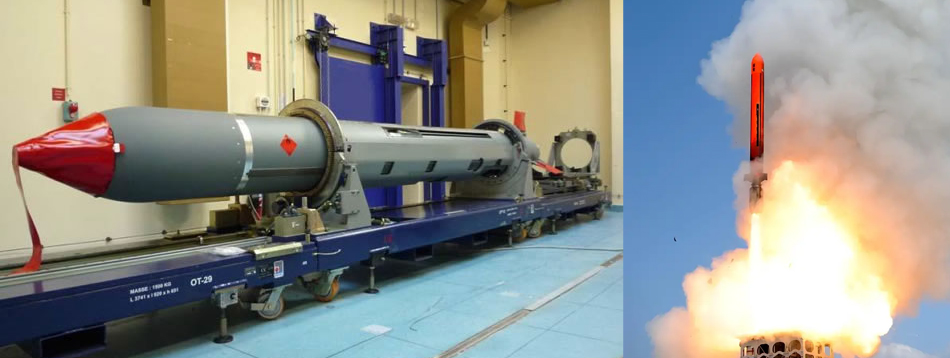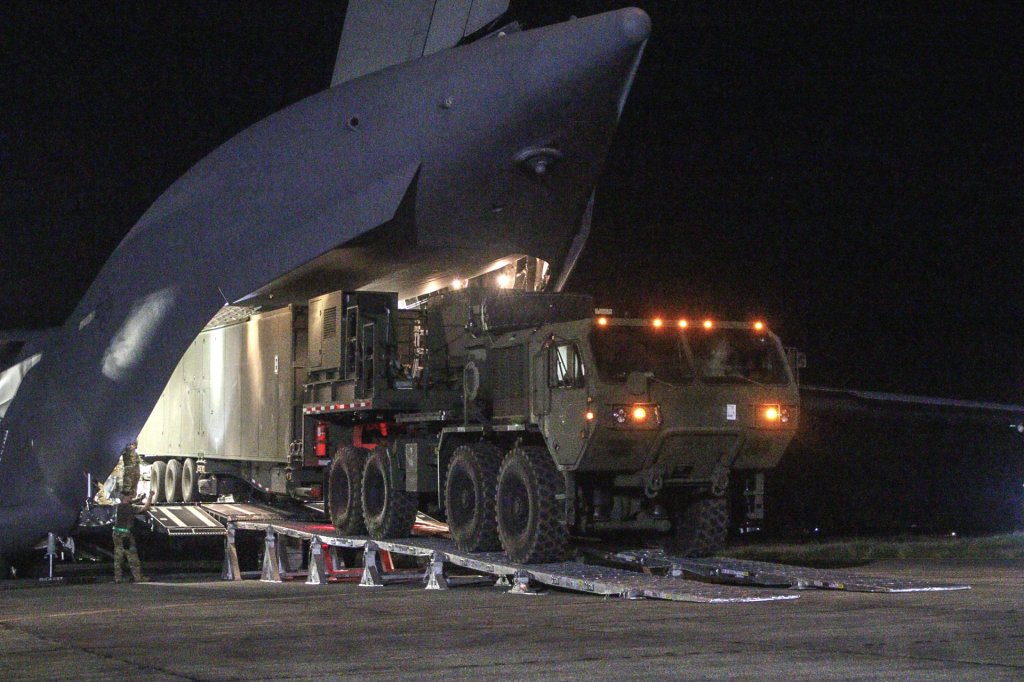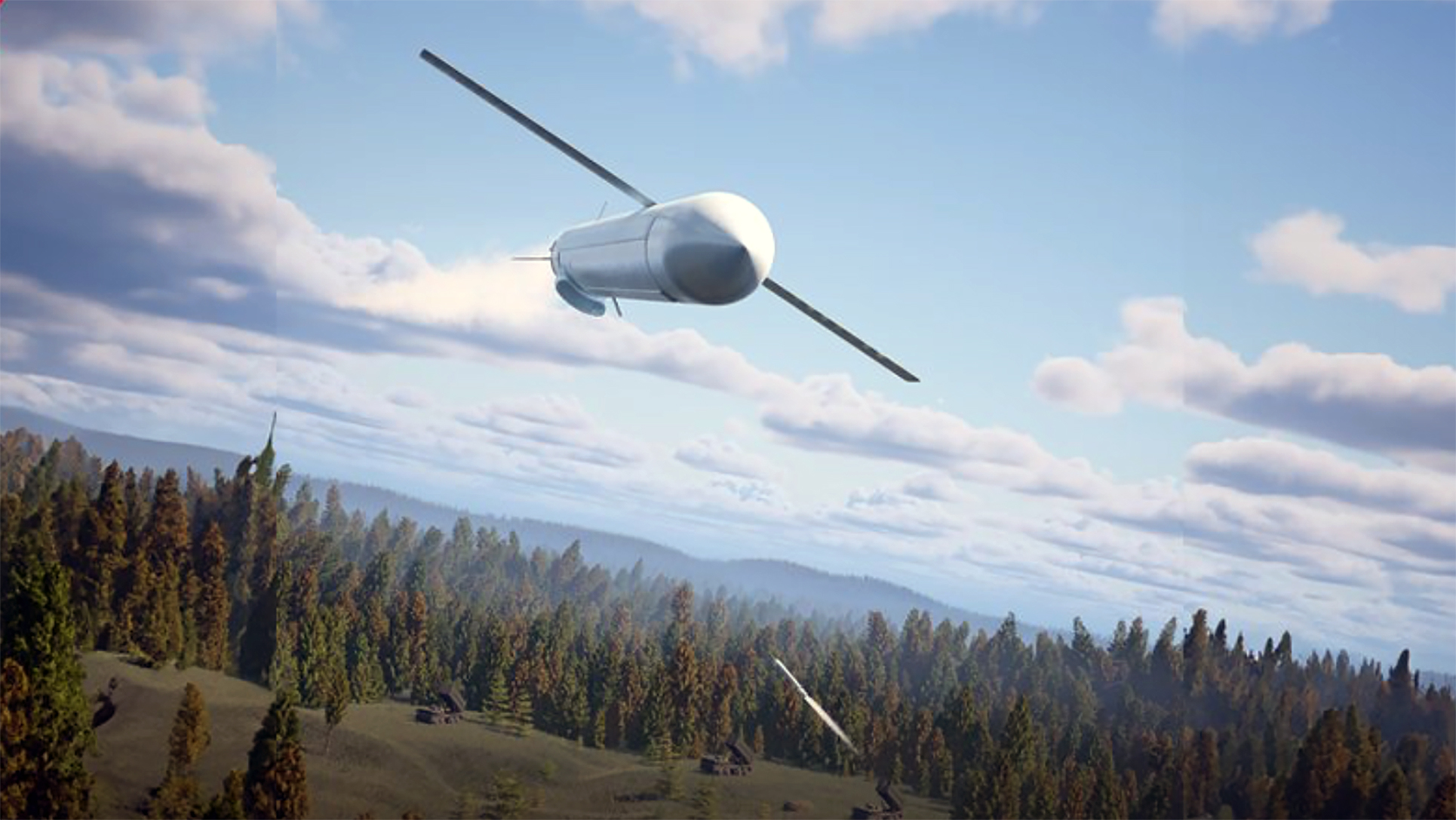The European missile conglomerate MBDA is jumping into the burgeoning market for ground-launched cruise missiles with its new Land Cruise Missile (LCM). It will be unveiled this week at the Eurosatory defense exhibition in Paris.
The LCM is based on MBDA’s Naval Cruise Missile (NCM), which evolved in part from the components of the air-launched SCALP-EG cruise missile that has been used to devastating effect by Ukraine. NCM is significantly larger with a different fuselage design and much greater range. LCM’s introduction comes as the need grows for new mobile, modular ground-based long-range strike capabilities.
MBDA released a few details about the new missile system on Tuesday.
Like the NCM, the LCM was designed to offer “metric precision at very long range,” although the release does not specify its range, size, payload or guidance systems. However, the missile it is based on is about 21 feet long with the droppable booster, weighs 1.4 tons with a 1,100-pound warhead, flies at about 500 mph, and can reach targets about 620 miles away, then-company President Antoine Bouvier explained in a 2010 interview.

The NCM has a GPS-assisted inertial navigation system (INS) guidance package, allowing it to fly at very low altitudes and adjust course, Belvoir pointed out. During the final attack phase, a pre-programmed imaging infrared seeker then recognizes a target and locks on. NCM is currently deployed on French Navy FREMM class frigates.

MBDA did say on Tuesday that the LCM has a “high survivability when penetrating through enemy integrated air defense systems” due to its “reduced radar cross section and terrain-following capability; and high lethality against targets.”
LCM will also allow “highly accurate synchronized time-on-target (STOT) capability” that the French Navy demonstrated in April during a simultaneous NCM strike from both the multi-mission frigate Aquitaine and a Suffrenclass nuclear-powered attack submarine.
The missile conglomerate did not explain what kind of launchers will be used. However, the rendering accompanying their media release shows wheeled launcher vehicles with four canistered rounds of the missiles each.
We’ve reached out to MBDA to find out the LCM’s exact specifications as well as the type of vehicles they will launch from and will update this story with any pertinent information provided.

The reintroduction of ground-based cruise-missiles systems by the West was spurred by the 2019 collapse of the Intermediate-Range Nuclear Forces Treaty, or INF, between the United States and Russia. The INF had prohibited both countries from developing and fielding missiles in this category. You can read more about the implications of that in our deep dive from the time here.
The U.S. Army and Marine Corps are both beginning to field and test ground-launched long-range munitions.
In April, the U.S. Army for the first time sent elements of its newest ground-based missile system, called Typhon, overseas. In a blaring message to Beijing, it took part in an exercise in the Philippines. Typhon can fire Tomahawk cruise missiles and SM-6 multi-purpose missiles. That deployment was a glimpse into the future as the Army works through plans to permanently base these systems in China’s backyard.
As we explained in our story at the time, Typhon will eventually have the capacity to strike land and sea targets.

In May, we wrote about the U.S. Marine Corps’ new 4×4 unmanned Tomahawk launch vehicle firing one of those cruise missiles recently during a test.
That launcher, a drone truck dubbed the Long Range Fires Launcher, is similar, but not identical to the Joint Light Tactical Vehicle-based design that the service is also fielding as a launch platform for Naval Strike Missile anti-ship missiles.
As part of its commitment to ground-based long-range fires, the Marines last year stood up their first Long Range Missile (LMSL) battery, which The War Zone was the first to report. These missiles would be essential in a Pacific fight, where the Corps would be hopping from island to island and needing to hold the enemy at risk with the ability to hit vessels. The mobility is required to reduce vulnerability to counterstrikes and complicate adversary decision-making and targeting cycles.

The real-world application of mobile extended-range fires has come into sharp focus in Ukraine as Kyiv’s forces have used donated Guided Multiple Launch Rocket System (GMLRS) and more recently Army Tactical Missile System (ATACMS) short-range ballistic missiles in blistering attacks on Russian targets. You can see a video of a Ukrainian ATACMS strike below.
Longer-range weapons, such as Storm Shadow and SCALP-EG, have had a major impact, as well. So much so that Ukraine has petitioned and appears to have succeeded in getting donors of these weapons to allow their use against targets in Russia under certain circumstances. The air defense situation over and around Ukraine further highlighted how advanced standoff weapons will be critical in an all-out conflict against Russia as air defenses can become so dense, surviving them becomes perilous for all but the most advanced combat aircraft and joint operations.
MBDA has yet to announce any deals for the LCM, but the most likely customers would be allied European nations seeking stand-off capabilities to counter Russia. A mobile system like this would provide that without requiring tactical aircraft. So even if airfields are damaged, they can still make high-priority deep strikes against critical targets in Russian territory.
Finding and striking mobile launchers is a very challenging mission that requires immense real-time intelligence gathering capabilities over broad and hotly contested or denied areas. Russia is especially poor at executing this kind of mission. Thus, these missiles would be survivable even during a major conflict.
Based on the stated 620-mile range of the LCM’s navalized predecessor, even Moscow could be targeted by all the Baltic states, Finland. and potentially Poland. Kaliningrad and Belarus are vulnerable to this weapon when launched throughout Europe. The range of this ground-launched variant could even be further than the NCM, but we just don’t know right now.
Employing these missiles, along with other standoff weapons, against critical air defenses and command and control nodes so that F-35s carrying B61-12 nuclear bombs could make it to their targets intact also helps underpin NATO’s increasingly important deterrent role.
“Customers operating NCM missiles and LCM systems will belong to an exclusive club of countries possessing very long-range Deep Precision Strike capability from below and from the surface of the sea as well as from the ground,” MBDA said in its media release.
Regardless of how they will be launched or where they will be launched from, the demand for these weapons could explode as nations race to arm themselves based on lessons learned in Ukraine and troubling projections of what could be on the horizon.
Contact the author: howard@thewarzone.com
